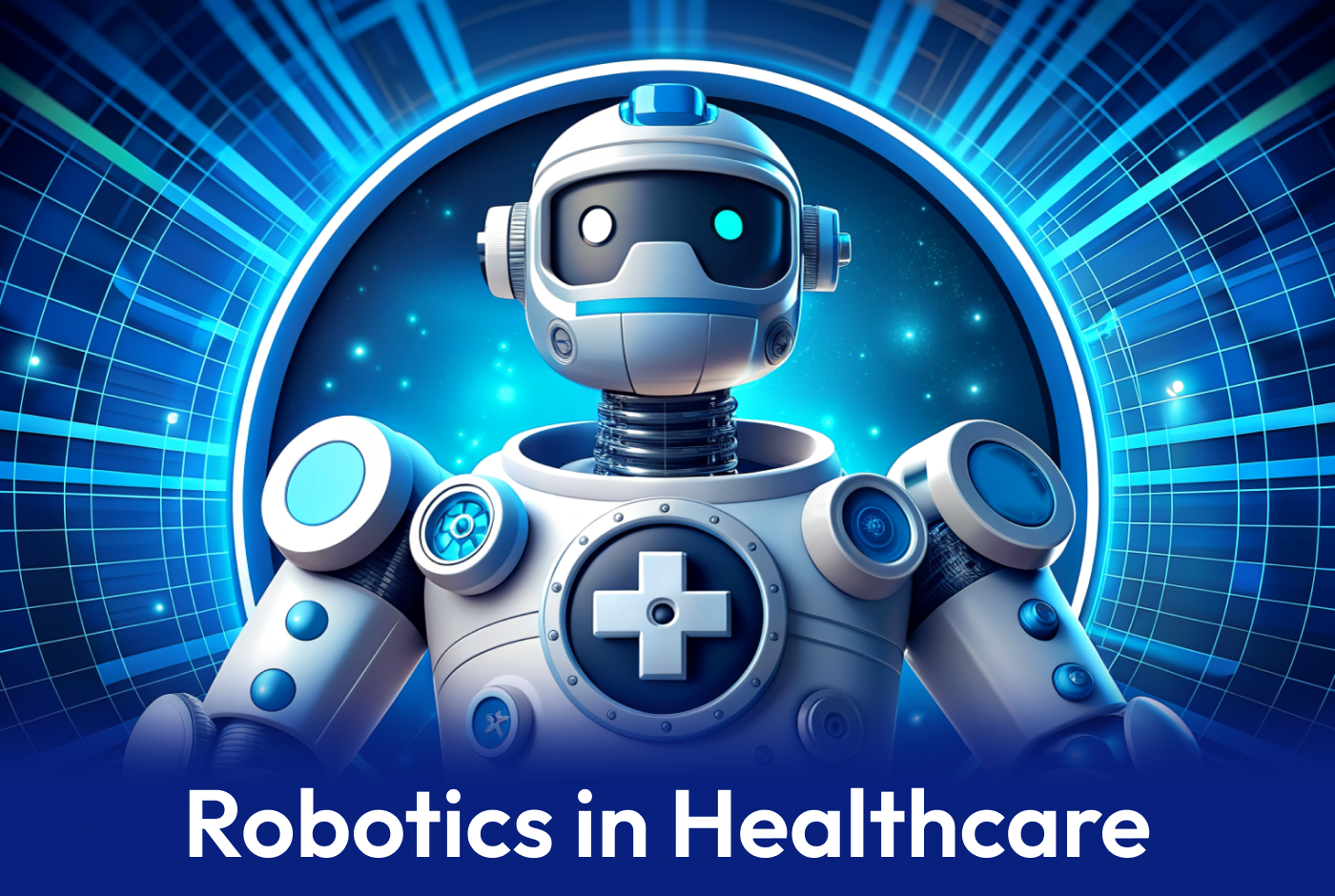
Robotics in Healthcare: Revolutionary Healthcare
Robotics in healthcare represents a groundbreaking intersection of technology and medicine, fundamentally redefining patient care and medical procedures. As we venture into 2024, the healthcare industry is witnessing a remarkable transformation fueled by the integration of robotics. These robotic technologies range from advanced surgical assistants to patient care bots, each contributing to more efficient, precise and effective healthcare services. The use of robotics in healthcare is not just a leap forward in technology, it symbolizes a paradigm shift in treating and managing patient health. With continued advancements and increasing adoption, robotics is poised to become an integral part of healthcare, offering promising solutions to some of the most complex medical challenges.
The Surge in Surgical Robotics
The application of robotics in surgery
has undergone exponential growth, significantly
changing the landscape of surgical procedures. The incorporation of artificial
intelligence (AI) in robotic systems is enhancing imaging and diagnostic capabilities
and paving the way for the automation of certain surgical tasks. This trend is akin to
the advent of driverless cars in the automotive industry, signaling a future where
robotic platforms might autonomously perform surgeries. AI's role in analyzing vast
amounts of surgical data to replicate and assist in complex procedures is a testament to
this technological evolution. Surgical robotics is not just about mechanizing
operations; it's about augmenting the surgeon's capabilities, improving precision, and
ultimately enhancing patient outcomes. The future of surgical robotics is expected to
see continued growth, with more advanced and autonomous systems revolutionizing the way
surgeries are conducted.
Key objectives
2.Sustainability and Social Impact in NFTs
3.The Future Outlook
“She packed her seven versalia, put her initial into the belt and made herself on the way. When she reached the first hills of the Italic Mountains, she had a last view back on the skyline of her hometown Bookmarksgrove ” — Jean Smith
.jpg)
Advances in Soft Robotics and Nanorobotics
The field of soft robotics has emerged as a pivotal area in medical robotics, particularly for applications within the human body. These robots, characterized by their flexible and adaptable structures, are being developed for tasks like targeted drug delivery and minimally invasive surgeries. A notable advancement is the development of an implantable device that combines AI and soft robotics to deliver drugs over time, addressing issues like fibrosis. This innovation has significant implications for managing chronic conditions such as diabetes. Nanorobotics is another exciting frontier, with research focusing on tiny robots that can navigate the body's intricate pathways for various medical purposes, including drug delivery, tissue repair, and disease monitoring. The potential of nanorobotics lies in its ability to perform tasks at a scale previously unachievable, offering new possibilities for patient treatment and care.
.jpg)
The Role of Service and Social Robots
Service robots are playing an increasingly important role in healthcare by handling routine tasks, thus relieving healthcare workers from mundane duties. These robots set up patient rooms, manage inventory, transport supplies, and even assist in cleaning and disinfection tasks.
Social robots, on the other hand, are enhancing patient experiences by providing
emotional support and social interaction, especially in long-term care settings. They
are designed to engage with patients, offering companionship, and monitoring for medical
distress. The adoption of these robots is contributing to improved patient satisfaction
and reducing the workload on healthcare staff, ultimately leading to a more efficient
and compassionate healthcare system.
Future Directions in Medical Robotics
The future of robotics in healthcare is marked by continuous innovation and expansion into new areas. Robotic exoskeletons are enabling patients to regain mobility, providing a sense of independence crucial for recovery. AI-driven diagnostic and treatment planning tools are improving medical care's accuracy and personalization. The development of microbots, though still experimental, could revolutionize surgery and recovery by allowing minimally invasive internal repairs. This technology promises to reduce recovery times and enhance the overall patient experience. The medical robotics field is rapidly evolving, with each innovation bringing us closer to a future where healthcare is more accessible, efficient, and patient-focused.
Conclusion
The integration of robotics in healthcare is ushering in a new era of medical treatment and patient care. From surgical assistance to rehabilitation and patient support, the potential of robotics is vast and continuously growing. As these technologies develop, they promise to make healthcare more precise, efficient, and centered around the needs of patients, heralding a transformative period in medical history.



